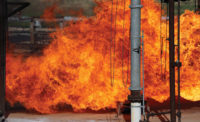Safety managers are responsible for keeping workers safe, but it shouldn’t come at the expense of sales or productivity. That often starts with picking the right personal protective equipment (PPE) provider. At its core, a PPE provider partnership is about delivering high levels of service and quality products.
Anyone charged with responsibility for safety will benefit from working with an established, knowledgeable and experienced PPE provider that can help navigate the world of safety standards and offer the best possible PPE solutions. This article examines what environmental, health and safety managers should look for when seeking a PPE provider and the benefits of working with one partner versus several.
Total body protection
A quality provider should offer a comprehensive and customizable assortment of head-to-toe PPE to keep workers safe and productive. Everything from safety footwear and flame-resistant workwear to gloves, safety glasses and more should be considered. An equipment provider should have a wide variety of PPE available because if it can supply the full range of required safety solutions, it will eliminate the time, money and energy spent searching for additional products.
Another key trait to look for is a supplier that owns the entire manufacturing process. This ensures consistent quality from the material sourcing through product design, testing, distribution and post-sale service.
Integrated equipment providers can also provide customizable solutions that are tailored to unique requirements, which are crucial for companies with niche protective needs. From simple name embroidery to more complex flame resistant (FR) striping patterns and badging requirements, an equipment provider should have trained specialists on hand who can complete the job to the highest standards — ideally at a local customization facility to help reduce lead times.
When it comes to the PPE itself, comfort and style should also be considered. People have grown accustomed to wearing featherweight sneakers and soft, breathable activewear materials in their free time, so they are starting to expect the same of their safety gear. Workers who have to wear specialized PPE for long, grueling hours will avoid properly wearing items they consider uncomfortable, which can put them in harm’s way.
To avoid this scenario, look for a manufacturer staying at the forefront of materials science to meet the demand for more comfortable safety equipment. Finally, a provider should offer industry-leading warranty coverage for its PPE to protect the company’s investments.
Knowledge of safety standards
Safety standards (product performance-oriented voluntary standards such as ANSI and NFPA) generally change every three to five years and provide a set of minimum requirements that PPE must pass during testing. These safety standards vary by country, but all are intended to protect workers on the job. Although all global safety footwear standards include key elements of protection, the testing methods, performance requirements and the certification process may have significant differences.
A good PPE partner should consistently update its assortment with the latest up-to-code, lab-tested and field-proven materials. The partner should also use high-quality leathers, fabrics and components sourced from trusted brands, which are subjected to rigorous internal and independent, third-party testing to ensure all safety standards are met. If the company’s equipment is based on outdated standards, unfortunately the responsibility of compliance falls solely on its leadership.
Industry knowledge
It’s vital that a PPE provider understands the unique details of a company’s various work environments. Whether or not a specific boot or coverall will provide adequate, long-term protection depends on much more than a set of standards. It requires a deep understanding of what the job actually involves, including the relevant surfaces, potential contaminants and physical requirements. An optimal provider will have experience developing purpose-built safety solutions for a variety of industries and use that expertise to ensure that employees are properly protected.
Since every work environment is unique, improving safety depends on strong, open and transparent collaboration between the company and the provider. The manufacturer should not only provide as much detail as possible about its products, but also seek to understand every nuance of a work environment before making recommendations. Providers should recommend products from the workers’ point of view because there is nothing more important than ensuring their safety, protection and comfort on the job, regardless of the industry or conditions.
Distribution reach
While getting products to and from certain operations can pose challenges, a provider should be able to ship PPE product to any location within a few days of being ordered. This is only possible if the provider has an extensive, longstanding network of distribution channels with deep and varied product inventory. Providers with strategically located stores, manufacturing facilities and distribution hubs ensure that PPE solutions and services are available whenever needed.
Full-service partnership
A PPE partner can offer all of the above, but if it doesn’t provide a dedicated expert who can guide safety managers through the appropriate standard and customizable PPE options, it won’t be a true partnership. The manufacturer should have a solutions-first, product-second mindset. If it emphasizes products more than the safety of workers, odds are it isn’t the right fit. A good partner should form a close, strategic relationship with all stakeholders to help determine the biggest safety risks posed to workers and provide ongoing solutions and education to mitigate those risks.
Put simply, the best providers will ease the entire PPE procurement process rather than add to or complicate the work. For example, certain manufacturers offer virtual platforms that enable customers to easily and quickly access product and order information. These programs reduce administration time, mitigate risks by assuring the right product is selected for the job, and eliminate costly waste and inaccuracies.
The ideal PPE provider will be a true one-stop shop. It will offer everything from original product designs and raw goods sourcing to quality manufacturing, testing, distribution and service. This will allow safety managers and company leadership to stay focused on key business activities and workers’ needs, while remaining confident their workers are safe on the job.



